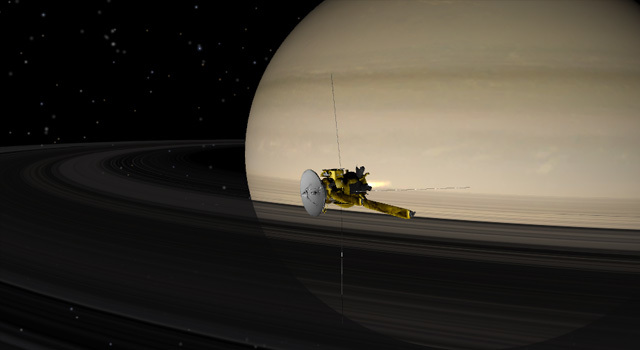Io: Exploration
Most of what we know about Io comes from Galileo spacecraft, which made a detailed study of the Jupiter system—including Io—from orbit from December 1995 to September 2006, but it was Voyager 1 that spotted the first signs of the little moon’s powerful volcanism in 1979. Since 2003, three spacecraft—Ulysses, Cassini, New Horizons and Juno—have made additional close observations of Io. Juno is currently orbiting Jupiter, but its prime mission is focused on the giant planet, not the moons.
Significant Events
- Dec. 8, 1610: Galileo Galilei makes the first recorded observations of Io and three more moons orbiting Jupiter.
- 1973-1974: Pioneer 10—the first spacecraft to explore Jupiter up close—and its sister mission, Pioneer 11, make the first close-up measurements of Io.
- March 1979: Voyager 1 catches a volcanic eruption in the act during its Jupiter flyby.
- July 1979: Voyager 2 takes additional images and captures more science data during a more distant flyby of Io.
- 1992: Scientists are surprised when the Ulysses spacecraft—using Jupiter to hurtle itself into an obrit to study the poles of the Sun—passes through a fast-moving stream of particles from Io—faster than most other particles found in the solar system.
- 1995-2002: The Galileo spacecraft makes detailed observations of Io during multiple flybys, providing the closest views to date of the tortured moon.
- 2000: The Cassini spacecraft studies Io while passing by Jupiter en route to Saturn.
- 2007: New Horizons documents Io’s ever changing surface in images that are compared to Galileo images back on Earth.
- 2023: Juno makes several passes close to Io. The craft's JIRAM instrument (Jovian InfraRed Auroral Mapper), designed by the Italian Space Agency to monitor auroras on Jupiter, is also used to study heat sources on Io, including a possible active volcano at the 125-mile-wide (202-kilometer-wide) Loki Patera, the largest volcanic depression on Io.
Explore in 3D—Eyes on the Solar System

Eyes on the Solar System lets you explore the planets, their moons, asteroids, comets and the spacecraft exploring them from 1950 to 2050. Ride with the Curiosity Rover as it lands on Mars or fly by Pluto with the New Horizons spacecraft all from the comfort of your home computer.




